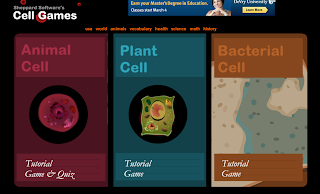After graduation I hope to teach high school biology. Thanks to today's technology, learning in science classes is continuously changing. I think the best tool to keep my class up-to-date with this never ending changes are my fellow science teachers. A great site to find these people, see their work, and suggestions would be through the National Science Teachers Association. Just exploring the site for a few minutes I found a tab linking to hundreds of resources for science teachers. It's always handy to have different examples and questions for students that you may not have originally thought of. It's probably safe to say that hundreds of heads are better than just one.
 To some students science concepts, usually, take time and repetition to learn. But, looking at tables and figures in textbooks can become quite boring after a few hours. Therefore, I searched for fun science games in Google. One site that caught my eye and came up in several forums was SheppardsSoftware. This site has some great fun and interactive games to help learning be entertaining for students. They have games for almost every subject and grade level from preschool through twelfth grade. I will definitely send students here for a helpful study aid.
To some students science concepts, usually, take time and repetition to learn. But, looking at tables and figures in textbooks can become quite boring after a few hours. Therefore, I searched for fun science games in Google. One site that caught my eye and came up in several forums was SheppardsSoftware. This site has some great fun and interactive games to help learning be entertaining for students. They have games for almost every subject and grade level from preschool through twelfth grade. I will definitely send students here for a helpful study aid. 






